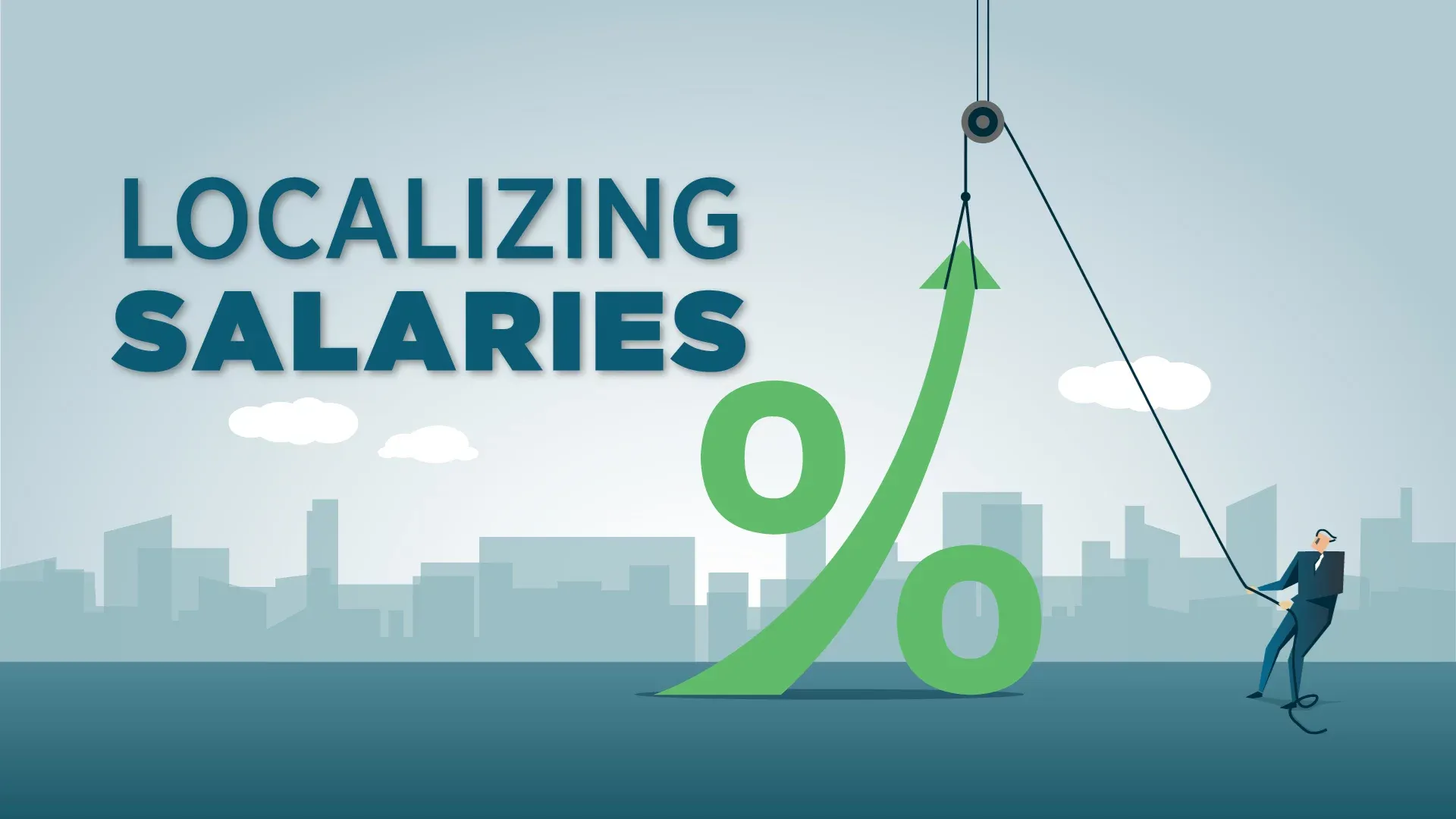Localizing nationwide salary data to suit your location can be a daunting task. We know because you send us emails about it.
To help our members, ChurchSalary has cultivated a set of resources, maps, instructions, and links below. Gather the appropriate data. Contextualize it using personal knowledge of your community. Then filter it through your church’s compensation philosophy in order to localize salary data.
Table of Contents
- COLI versus COLA
- Orientation
- Basic Expenses
- Purchasing Power
- Income and Cost of Labor
- Conclusion
- Worksheet
- Glossary
COLI versus COLA
Before we get started, the acronyms COLI and COLA often get confused for one another, even though they are different things. The problem is that a cost of living index is designed to help you adjust salary or wage data based on the cost of living. It makes perfect sense then that people would describe this process as a “cost of living adjustment.” Unfortunately, they are not the same thing. One is trying to adjust salary data based on your location, the other is trying to adjust wages based on inflation.
For added info and definitions, consult the glossary below.
The Cost-of-Living Index or COLI is an estimate of how much more or less it costs to live in a given community compared to the national average. There are different formulas for estimating a cost-of-living index used by different organizations. To learn more about the index used by ChurchSalary, click here.
A Cost-of-Living Adjustment or COLA typically refers to the annual process of adjusting salaries/wages to offset the impact of inflation. To learn more about inflation indexes used for COLAs, see our article on Making Sense of Inflation for COLA Raises.
This article will focus on how your church can use several data points, including a cost-of-living index or COLI estimate, to adjust nationwide salary data to adapt to the unique economy and wage requirements of your location.
Orientation
Why can’t you multiple the salary figures in your report by the COLI percentage for your county/city? “Isn’t that what a cost of living index is designed for?,” you may ask. Yes, you can do that.
However, for at least two major reasons, ChurchSalary recommends that go beyond this simple approach and consider multiple data points at different demographic levels.
First and foremost, as we explored in a recent article, differences in salary/wages in your community do not correlate one-to-one with COLI. Neither one directly causes or correlates with the other.
Second, the cost-of-living index is heavily influenced by housing and this cost varies wildly throughout your community. If your job pays you less, you can choose to live in a more affordable neighborhood or you may not be able to purchase a house at all.
As a result, the process of adjusting nationwide salary data to suit your location should involve answering three questions using data sourced from four different geographic levels:
Three Questions
- Basic Expenses: How much does it cost to live and thrive in your community?
- Purchasing Power: How far will an employee’s salary stretch in your area?
- Cost of Labor: Are workers paid more or less in your local economy than the national average? If so, why?
Demographic Levels
Demographic information about your community is captured and presented at different levels by the federal government. The four main levels at which you can and should gather data are:
- Census tract
- *Place (City or Town)
- County
- Metropolitan or micropolitan statistical area (MSA/(μSA)
Compare each of these levels with the nation as a whole or with each other (e.g., county versus MSA). You can figure out the different levels or geographic designations for your community using the Cost of Living Analysis app.
Basic Expenses
Before you start adjusting national averages, ask yourself: “Are we paying employees enough to afford housing, food, healthcare, transportation, and other basic expenses?” Below are some charts and websites that can help you quantify the cost of basic expenses in your community.
Map: Rent and Home Prices
The map below displays important housing and rent figures for each county and MSA: namely, a home and rent price range (25th, 50th, and 75th percentile), as well as the estimated monthly costs for homeowners
Note that the map below is based on the most recent 5-year ACS estimates (2018-2022) (adjusted for 2022 dollars). Because it is about a year old, we recommend that you update it using one of the two following resources.
- The NAR website (see explanation below).
- The FHFA Home Price Index (HPI) calculator
Resource: Median Home Values
Consult this National Association of Realtors (NAR) map or PDF to see adjusted* median home values for Q3 2023.
Resource: Living Wage, MIT
The Living Wage Calculator, created by Amy K Glasmeier at the Massachusetts Institute of Technology, estimates “the hourly rate that an individual must earn to support his or herself and their family” in your community or local economy. The “living wage” is akin to a flourishing or thriving benchmark, not mere survival.
Hourly figures can be extrapolated to an annual salary by multiplying by 2,080 (i.e., 40 hours x 52 weeks = 2,080 hours per year.).
Resource: Mortgage Calculator
Plug any of the above home value numbers into Google’s simple mortgage calculator to estimate a monthly payment, and by extension an annual housing allowance (monthly costs x 12), for a pastor in your area.
Purchasing Power
Cost of Living
Explore the map below to see 2023 COLI figures for both your county and MSA, as well as the Q3 2022 Regional Price Parity Index (RPP)for your MSA (if data is available).
How to Contextualize COLI Data
At the most basic level, COLI is as an estimate of how far a salary will stretch or the purchasing power of an average national salary in your county or MSA.
Learn more about COLI: Unpacking the Cost of Living
Housing heavily impacts the COLI in your county. Because employees usually can find more afforable housing in nearby counties or neighborhoods, ChurchSalary recommends that you also consult the COLI figure for your metropolitan statistical area (MSA).
The COLI for your MSA reflects the maximum “stretch amount” an employee can expect from an average nationally comparable salary in your local economy.
Local Income and the Cost of Labor
Compensation in your local economy varies based on a lot of factors. However, as we have discussed elsewhere, it rarely increases or decreases at the exact same level as either COLI or the CPI-W (the inflation index that the Social Security Administration uses for their COLA). The map below displays several income measures at the county and MSA-level (with the percentage change between the national benchmark in parentheses) alongside ChurchSalary’s cost of labor estimate.
How to Contextualize Income Data
Every income and salary measure for your county or MSA should be contextualized based on personal knowledge of your community. Ask yourself, “does (or should) this number reflect the income of employees and pastors at our church?”
Additionally, bear in mind that when you are localizing nationwide salary data the percentage change between nationwide benchmark and your area (listed in parenthesis) is almost always more important than the raw number itself.
Median household income (MHI) reflects the income of all individuals who are living in a single house. This includes cohabitating (non-married) couples, multi-generational families, and non-related roommates.
Per capita income (PCI) reflects the total reported income divided by the population. The same factors that can distort MHI may also distort PCI in your community (see footnote above for more details).
Cost of labor is a measure of how much more (or less) employees are being paid in your area as a result of supply and demand. To estimate a generic cost of labor, ChurchSalary compared “All Occupations” salary data at the MSA or non-metropolitan level with the national average. This figure estimates how much higher or lower the average worker in your local economy is paid versus the national average.
To better understand and contextualize income data for your community, we recommend that you use our new Cost of Living Analysis app (available to Expanded or higher members).
Pro tip
Every full-time pastoral report includes a series of averages in the Localized Salary Recommendation section. You can calculate the percentage change between these localized averages and the nationwide average to get a sense of how salary in the real world increases or decreases depending on your region, COLI, MHI, and population density. Use these values as another set of income data points, much like the cost of labor.
Conclusion
To calculate a fair and reasonable localization adjustment, your church should:
- Capture data at relevant geographic levels.
- Discuss these numbers with the personnel team or church elders.
- Contexualize this data using personal knowledge of your community.
- Then, calculate a percentage that you think will best localize nationwide salary data for your community.
Whatever you decide, document your process and/or reasoning. Sharing this with your staff will foster trust and transparency.
ChurchSalary is committed to condensing this information and providing it to our members. We are working to incorporate more cost-of-living data in our salary reports. For now, you can find all of these resources on this page. We will update these figures on an annual basis or as frequently as they are published by various government agencies.
Bonus: Practical Example
Download this worksheet (PDF) containing discussion questions and a practical example designed to help your church calculate a cost-of-living adjustment.
Glossary
COLA: COLA is an abbreviation of the phrase “cost of living adjustment.” COLA is typically a percent adjustment that acounts for yearly inflation (the Social Security Administration). Sometimes people describe the process of adjusting nationwide salary data based on the cost of living (or cost of living index) as a cost-of-living adjustment, but these are not the same thing. One adjusts nationwide data based on your location, the other adjusts last year’s salaries based on inflation.
COLI: The cost of living index (COLI) used by ChurchSalary is based on a zip-code level survey of the cost of consumer goods and services. It is the only index that uses this local-level measurement methodology. Price surveys are collected by 300 independents researchers and the data is analyzed and published by The Council for Community and Economic Research (C2ER). Learn more about COLI here.
Contract Rent Range: According to the US Census Bureau, “contract rent” reflects the “monthly rent agreed to or contracted for, regardless of any furnishings, utilities, fees, meals, or services that may be included.” This figure includes condo fees paid by tenants. The range represented in the maps above capture the first and third quartiles of contract rent at the county-level (75 percent of rent contracts will be higher than the first quartile and 75 percent will be lower than the third quartile).
Median Home Values: The National Associate of Realtors map is an adjustment of median home values published in the 2022 American Community Survey at the MSA and county-level, using the Federal Housing Finance Agency (FHFA)’s quarterly House Price Index (HPI). Mortgage payment estimates are based on a 10% down payment at a 30-year fixed-rate (fully amortized) and do not include insurance or real estate taxes. For true, non-adjusted county-level data, consult the Rent and Home Prices map (above).
Median Household Income or MHI: Median household income, per the US Census Bureau, reflects the income of the householder and all other individuals 15 years old and over in the household, whether they are related to the householder or not. The median captures the point where one-half of the cases fall below and one-half above. For households and families, the median income is based on the distribution of the total number of households and families including those with no income.
Monthly Owner Costs with a Mortgage: According to the US Census Bureau, the median selected monthly owner costs with a mortgage measure the monthly cost of “monthly cost of utilities (electricity, gas, water, and sewer) and fuels (oil, coal, kerosene, wood, etc.) paid by the homeowner.”
MSA: A metropolitan statistical area, as defined by the United States Office of Management and Budget (OMB), reflects “a core area containing a substantial population nucleus, together with adjacent communities having a high degree of economic and social integration with that core.”
PCI: Per capita income, per the US Census Bureau, is “the mean income computed for every man, woman, and child in a particular group including those living in group quarters. It is derived by dividing the aggregate income of a particular group by the total population in that group.”
RPP: Regional Price Parity, published by the US Bureau of Economic Analysis, measures “the differences in price levels across states and metropolitan areas for a given year and are expressed as a percentage of the overall national price level.” It attempts to smooth out regional differences and is based on 75 categories that represent 85 percent of all expenditures. Notably, it models the price of cheaper goods (that a frugal household might be able to find and purchase) and does not weigh home-ownership as heavily at C2ER’s COLI measurement.




